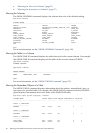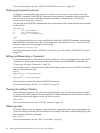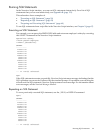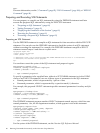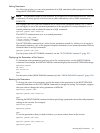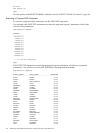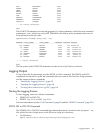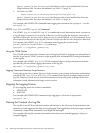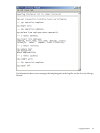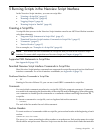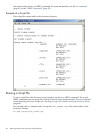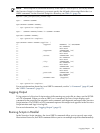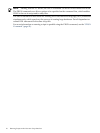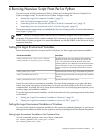hpnvs-installation-directory is the directory where you installed the Neoview
Script software files. For more information, see Table 2-1 (page 34).
• On Linux or UNIX:
hpnvs-installation-directory/nvscript/bin/sqlspool.lst
hpnvs-installation-directory is the directory where you installed the Neoview
Script software files. For more information, see Table 2-1 (page 34).
For example, this SPOOL ON command starts logging the session in the sqlspool.lst file:
SQL>spool on
SPOOL log-file or LOG log-file Command
The SPOOL log-file and LOG log-file commands record information about a session in
a log file that you specify. If you specify a directory for the log file, the directory must exist as
specified. Otherwise, an error occurs when you try to run the SPOOL or LOG command. If you
do not specify a directory for the log file, Neoview Script uses the Neoview Script bin directory.
For example, this SPOOL log-file command starts logging the session in the
persnl_updates.log file in the C:\log directory:
SQL>spool C:\log\persnl_updates.log
Using the CLEAR Option
The CLEAR option clears the contents of an existing log file before logging new information to
the file. If you omit CLEAR, Neoview Script appends new information to existing information
in the log file.
For example, this SPOOL log-file CLEAR command clears existing information from the
specified log file and starts logging the session in the log file:
SQL>spool C:\log\persnl_updates.log clear
Logging Concurrent Neoview Script Sessions
If you plan to run two or more Neoview Script sessions concurrently on the same workstation,
use the SPOOL log-file or LOG log-file command and specify a unique name for each
log file. Otherwise, each session writes information to the same log file, making it difficult to
determine which information belongs to each session.
Stopping the Logging Process
To stop logging, enter one of these commands:
• SPOOL OFF
• LOG OFF
For example, this SPOOL OFF command stops logging in a Neoview Script session:
SQL>spool off
Viewing the Contents of a Log File
The log file is an ASCII text file that contains all the lines in the Neoview Script interface from
the time you start logging to the time you stop logging. The logged lines include prompts, entered
commands, output from commands, and diagnostic messages.
For example, this log file contains information from when you started logging to when you
stopped logging:
64 Running Commands Interactively in the Neoview Script Interface



